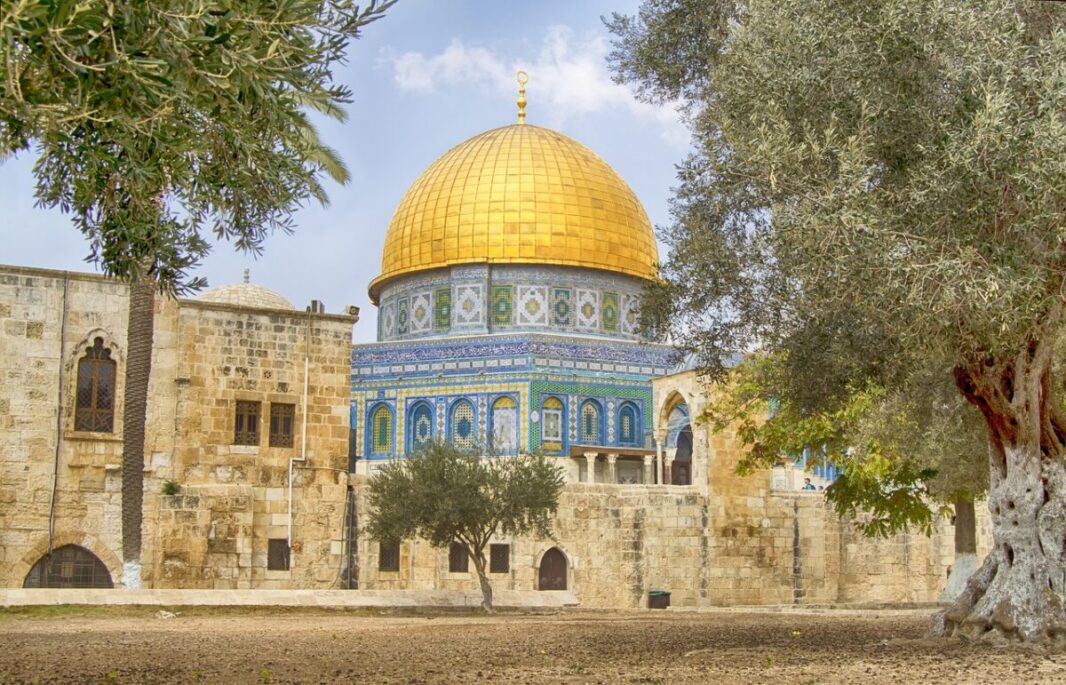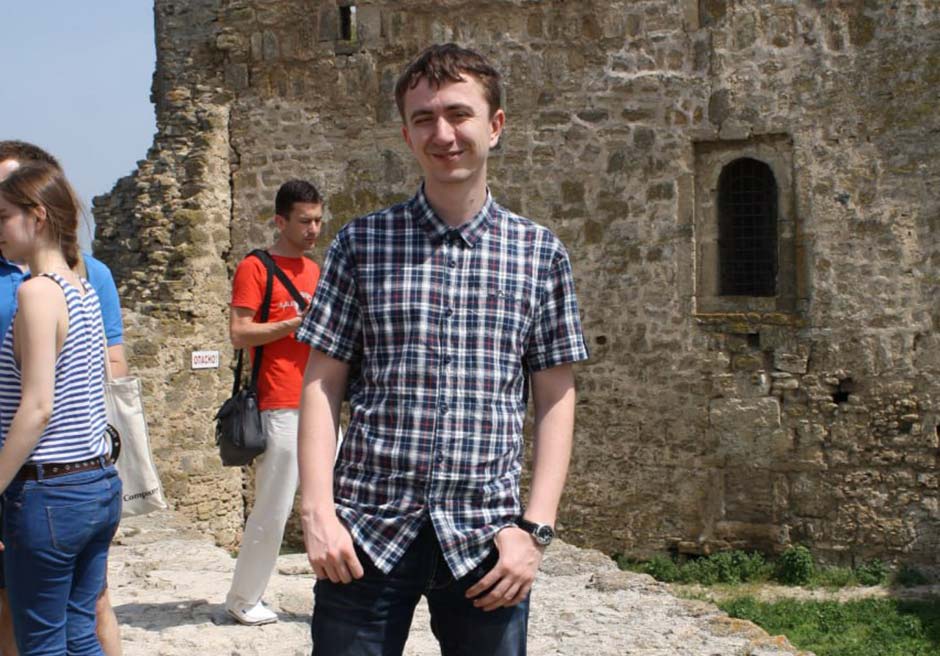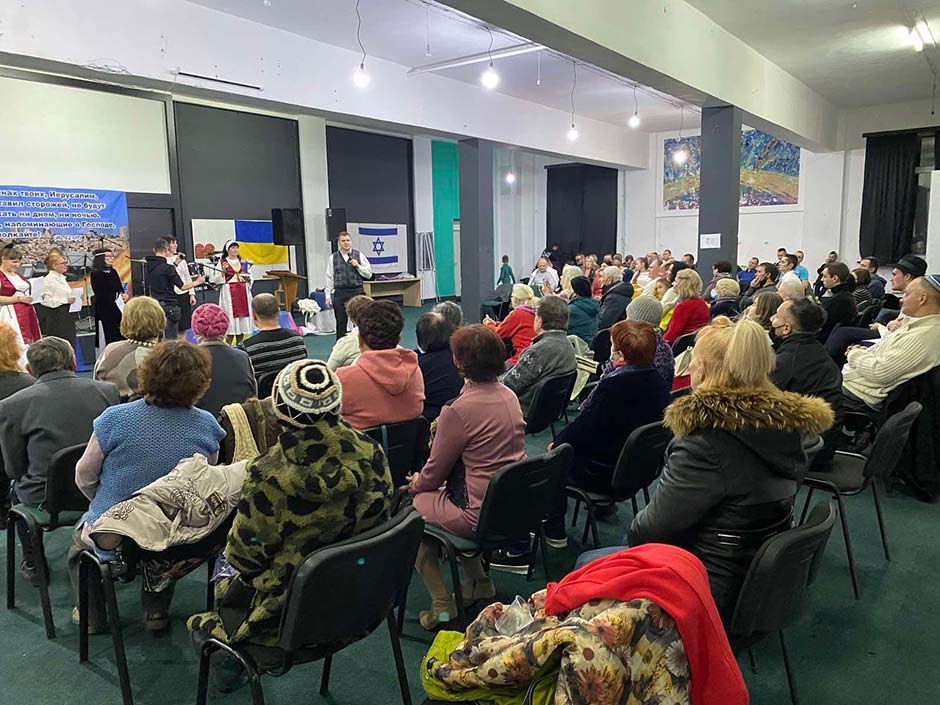ONE OF THE MOST COMMON false assumptions about Messianic Judaism is that it “suddenly” popped up in the last half of the Twentieth Century. Most honest Bible scholars re-cognize that most of the believers in the first half of the First Century re-mained loyal Jews, still observing Torah.[1] Their ethnic heritage was predominantly Jewish, and they continued their traditional Jewish lifestyles. Even after the Besorah (Good News) went to the Gentiles, the Jewish believers still remained Torah-observant.
When Rav Sha’ul (Paul) returned from one of his missionary journeys, he related enthusiastically to the Messianic Jews in Jerusalem all about the wonderful things that God was doing among the Gentiles. “When they (the Messianic Jews) heard of it, they glorified the Lord, and said to him, ‘You see, brother, how many myriads (tens of thousands) there are among the Jews who believe, and they are all zealous for Torah.'” [2] Even Paul, this great “apostle of liberty” (as he is called among Christians) said, “I have committed no offense neither against the Law of the Jews, nor against the Beit HaMikdash (Temple), nor against Caesar.” [3] Later, Rav Sha’ul says, “I have done nothing against our people or the customs of the fathers.” [4] This indicates that Paul even observed such Rabbinic, non-biblical traditions such as the separating of milk and meat, as well as various other Halachic [5] methods for observing Torah.
The first Jewish believers in Yeshua were called by such terms as Nazarenes (Netzarim) (Acts 24:5), the sect of the Way (Acts 22:4; 25:14), and simply “Jews” (Acts 21:20; 22:3). The earliest record of the terms “Messianic Jew,” and “Messianic Judaism” being used for Jewish believers in Yeshua was in a publication called Our Hope, published by Dr. A.C. Gabelein in March 1895. (Regretfully, Dr. Gabelein later repudiated Messianic Judaism in 1908 after coming into contact with the writings of J.N. Darby and Dr. C.I. Scofield.) The term Messianic Judaism is of relatively recent vintage. However, it can be used to describe Torah-inspired believers (both Jewish and those grafted in from the Gentiles) in the Messiah in earlier centuries also.
It is also a well-established fact that Messianic Judaism continued as a viable movement for almost 300 years after the coming of Yeshua the Messiah. However, it is commonly believed that Messianic Judaism “died” at about the time of the Council of Nicea in 325 CE.[6] Many believe that after 325 CE, most Jewish believers in Yeshua simply converted to Christianity, and ceased to be Jewish in any real sense of the word. In some cases, unfortunately, this did indeed happen. Even today, there are tens of thousands of Jewish believers in the churches, with little or no sense of Jewish identity. Many others after Nicea continued to live as Biblically observant Jews. There was a tremendous amount of persecution that resulted from the very anti-Semitic Council of Nicea. As a result, Messianic Judaism became an underground movement. However, it continued to exert an influence for several more centuries. This is the history which this article seeks to address.
The “Forgotten” Years
The so-called “forgotten” history of Messianic Judaism has been well-documented over the centuries. Unfortunately, it was recorded almost entirely by the enemies of Messianic Judaism, in most cases by the scribes of the Roman Catholic Church. The actual writings of the Messianic Jews were nearly always burned when they came into the hands of the Church. Unfortunately, the Church didn’t stop with the writings; they also burned Messianic Jews for their faith. These writings suffered the same fate when they come into the hands of the non-Messianic Jewish community.
The most important text, in my humble opinion, for studying about Messianic Judaism during the years after Nicea (325 CE) until about 1500 CE is The History of the Sabbath by J.N. Andrews and L. Conradi, published by the Review and Herald Publishing Association, which is an arm of the Seventh Day Adventists. This landmark book was first published in 1887, and republished in 1912. After years of being out of print, a Third Edition was published in about 1988. Regretfully, most of the references to the Messianic Jews (Nazarenes and Pasaginians) were deleted in the Third Edition. Why did the SDA choose to delete these references to these Jewish believers in Yeshua who were persecuted for observing Shabbat and the Jewish Feasts (which also happen to be the Biblical Feasts)? I don’t know for certain. However, the Seventh Day Adventists believe in Replacement Theology, whereby the church (in this case, the SDA) replaced the Jewish people. Perhaps it might have been embarrassing that to acknowledge these Jews.
The Netzarim, which would be the Nazarenes, were named after the village of Netzaret/Nazareth, Yeshua’s home town. Curiously, Chasidic Jews also name their sects after the home town of their particular Rebbe. We have the Lubavitch, Breslov, Satmars, and other Chasidic sects, naming their sects after the home town of their Rebbe.
The other term more often used for Jewish believers in later centuries was Pasaginians, after the term Pasagii, a Latin term originating from passagium, meaning passage, because of the wandering, unsettled life of these people.
There is no lack of material about the Jewish believers of earlier centuries. Unfortunately, much of the material is found in books far older than The History of the Sabbath. However, with the internet, many are able to rediscover much of this “forgotten” history. Nevertheless, there is a remarkable ignorance about these Messianic Jews who lived in the Millennium after Nicea. It is almost like they never existed!
I’m sure that the Vatican Library would be another excellent source. Although I am not pleased about the Catholic persecution of Jews (both Messianic and non-Messianic) throughout the centuries, I am grateful that they kept records of who they were persecuting! We are grateful also that the Roman Catholic Church has done much to make amends for past persecutions and anti-Semitism. Perhaps they might someday open the Vatican Library to the study of Messianic Jews who suffered martyrdom. It might not be useful to me personally, as I don’t read Latin or Italian. However, for those that do, the Vatican is going on-line! Written artifacts dating as far back as the Second Century are about to meet the medium of the 21st Century! Technicians are making digital images of thousands of ancient manuscripts so that they can be viewed worldwide via the Internet! [7]
Quotes from early Church “Fathers”
Epiphanius (c. 315 to 402 CE) is one to whom we are indebted for his description of the Nazarenes of his time. He writes:
“We shall now especially consider heretics who call themselves Nazarenes (Netzarim); they are mainly Jews and nothing else. They make use not only of the New Testament, but they also use in a way the Old Testament of the Jews; for they do not forbid the books of the Law, the Prophets, and the Writings… so that they are approved of by the Jews, from whom the Nazarenes do not differ in anything, and they profess all the dogmas pertaining to the prescriptions of the Law and to the customs of the Rabbis, except they believe in Christ [Messiah]… They preach that there is but one God, and his son Jesus Christ. But they are very learned in the Hebrew language; for they, like the Jews, read the whole Law, then the Prophets…They differ from the Jews because they believe in Christ, and from the Christians in that they are to this day bound to the Jewish rites, such as circumcision, the Sabbath, and other ceremonies.
“Otherwise, this sect of the Nazarenes thrives most vigorously in the state of Berea, in Coele-Syria, in Decapolis, around Pella, and in Bashan (the Golan)… After they departed from Jerusalem, they made their start from here, as all the disciples dwelt in Pella, having been admonished by Christ to depart Jerusalem (Lk.
21:21) and emigrate because of imminent danger.”
“As late as the eleventh century, Cardinal Humbert still referred to the Nazarenes as a Sabbath-keeping Christian body at that time.”[8]
The Inquisition did many fiendish, evil things. However, the Inquisition did keep records of who they tormented. Often mentioned are the Pasaginians, beginning with the Council of Verona in 1184. These were Jewish believers in Yeshua who were “persecuted and hunted down like wild game by the Romish Church.” They were also called “Circumcisi” (circumcised ones).
Neander, a German church historian born of Jewish parents in 1789, made the following observation of the Pasaginians, “May not this word (Pasaginian) be regarded as an index, pointing to the origin of the sect as one that came… out of intercourse with Palestine (Israel)? May we not suppose that from very ancient times a party of Judaizing Christians had survived, of which this sect must be regarded as an offshoot?”[9]
Again, quoting History of the Sabbath, page 547: “And these so-called ‘Judaizing Christians’ were none other than the Nazarenes mentioned by Cardinal Humbert… the true Israel of God, who, amid all the persecutions through which they had passed, bore the reproach of Christ more than any other Christian party, wandering about as ‘pilgrims and strangers’ to preach the faith of Jesus (Yeshua) and the commandments of God.” (See Revelation 14:12.)
The Catholic writing of Bonacursus entitled, “Against the Heretics, Who Are Called Pasagii,” in about 1185, says, “Let those who are not yet acquainted with them, please note how perverse their belief and doctrine are. First, they teach that we should obey the Law of Moses according to the letter – the Sabbath, and circumcision, and the legal precepts still being in force. They also teach that Christ the Son of God is not equal with God…[10] Furthermore, to increase their error, they condemn and reject all the Church Fathers, and the whole Roman Church. Because they witness of the New Testament and the Prophets, let us slay them with their own sword.” Apparently, speaking for the truth, and walking according to the truth, was a major heresy!
Gregorius, of Bergamo, about A,.D. 1250, writes this against the Pasaginians:
“There still remains the sect of the Pasaginii. They teach Christ to be the first and pure creature; that the Old Testament festivals are to be observed– circumcision, distinction of foods, and in nearly all other matters, save the sacrifices, the Old Testament is to be observed as literally as the New. Circumcision is to be kept according to the letter.” The Pasaginian “heresy” had spread to Hungary, Bulgaria, France, and even into England and Italy.
Again quoting from History of the Sabbath: “Having fully established the fact that the Pasaginians were indeed the true Israel of God, believing all the Scriptures and exercising faith in Christ (Messiah), and having the entire Law of God written in their hearts by the Holy Spirit according to the fulfillment of promise,[11] we shall see how they were treated by the Catholic rulers.” The Catholic Church (as well as the Catholic rulers (kings) dealt harshly with the Pasaginian movement, until it was eventually persecuted out of existence by about 1500 CE.
“1492, COLUMBUS WAS A JEW”
One of the problems in writing about this “forgotten” history of Messianic Judaism is the shortage of personalities that we can point to as historical persons. This is largely because these Messianic Jews (or Pasaginians, as their enemies called them) had to live a very secretive existence if they were to survive. There were no large “Pasaginian Revival Meetings.” The leaders had to be very secretive about both themselves and their activities in order to avoid being arrested, tortured, and killed. Their lives were much like the Marranos, from the Spanish word for pig. It became illegal to be a Jew in Spain after 1492. Most Jews chose to leave Spain that year, the same year that Columbus “sailed the ocean blue.” Many remained in Spain, and supposedly converted to Catholicism. However, most Catholics doubted the sincerity of these conversions, and called such Catholic converts Marranos, as a term of insult. In many cases, their suspicions were correct, as many were outwardly Catholic, but secretly practicing Judaism in the privacy of their homes. The Pasaginians likewise lived double lives, hiding their Jewishness from the surrounding Gentile cultures.
Until recent years, historians nearly always assumed that Christopher Columbus was an Italian Gentile sailor. In reality, the evidence today strongly suggests that Columbus was a Spanish Jew.
My friend Rabbi Judea Miller was the rabbi of Temple B’rith Kodesh in Rochester NY, until his death in 1995. He accumulated a considerable amount of evidence that Christopher Columbus was a “Marrano.” It started with the old doggerel, “1492, Columbus was a Jew,” Rabbi Miller said. “As the years wore on, I did more investigating.” Miller traveled to Spain to study the historical documents on Christopher Columbus (or Cristobal Colon, as he called himself).
Don Celso Garcia de la Reiga, a Spanish scholar at the beginning of the 20th Century, researched people named Colon. His research established that Colon was a common name among Marranos. (Today, the preferred term for such forced converts to Catholicism is Anusim, meaning “forced ones.”) His research also established that the explorer’s mother – Suzanna Fontanarossa – was Jewish.
Because of increasing persecution, Miller believes that Columbus personally hid his birthplace and origin. It would have cost him considerable social status, and support from the Spanish monarchs for his exploration to the Indies, and could have even cost him his life during the barbaric Spanish Inquisition.
History books generally tell us that Columbus was born in Genoa, Italy. However, he led a Spanish expedition against Genoa in 1473. He never said that he was from Genoa, and never even visited it. He also consistently wrote in Spanish, never in Italian.
Columbus’ personal doctor was Jewish, as was Abraham Zacuto, his mapmaker. All of Zacuto’s astronomical tables were in Hebrew. Columbus also brought along Luis de Torres, a Jew who spoke Hebrew and Chaldean on his voyages in case they came across any “lost tribes” of Israel.
“There was a huge Jewish population in Spain prior to 1492. Ten percent of the population of Spain and Portugal was Jewish. They were successful, very prosperous, cultured,” said Miller. “Jews had until August 2, 1492 to convert or leave Spain.” Columbus chose for the voyage to leave on August 3rd.
Miller believes that Columbus was trying to find new lands for the Jews. Columbus mentions the exodus in his diary, and expresses his sadness. Columbus also connected the date of the exodus with the “saddest date on the Jewish calendar, Tisha B’Av (the 9th of Av). This date is when the Beit HaMikdash (Temple) in Jerusalem was destroyed by the Babylonians in 586 BCE.[12] On this same date in 70 CE, the rebuilt Temple was destroyed by the Romans. Columbus also mentions in his diary that he first sighted land on HaShanah Rabbah (the 7th day of Sukkot – Tabernacles).
Christopher was also learned in Hebrew and the Scriptures, both of which were rare among Catholics.[13]
Christopher Columbus,
a Messianic Jew
Most Marranos were strongly suspected of secretly practicing Judaism. After all, the other choices were forced exile or death, often by being burned at the stake. It wasn’t the most voluntary conversion program around. There were also a few Marranos who sincerely believed in Yeshua as Messiah, and did not find it inconsistent to secretly practice Judaism, which was, after all, the religion of Yeshua.
As time went on, it became more difficult to practice Judaism in secret. The persecution was intense, and assembling for Jewish religious services was nearly impossible, and dangerous to the extreme. Because of the forced secrecy and increasing religious ignorance, the religion of the Marranos eventually bore little resemblance to Judaism.
The first Jewish (and Biblical) tradition to disappear was circumcision. It would become very dangerous to not have a foreskin. It became dangerous to not go to church. By the time the inquisition ended in 1821, it was felt that all the “secret Jews” had been discovered and eliminated from Spain and Portugal. Imagine the surprise of the world when Marranos (“secret Jews”) were discovered in Portugal in 1915! They had continued to practice a very rudimentary form of Judaism. Although there was no Inquisition to fear, the tradition of secrecy made it difficult for even other Jews to investigate them. However, successive governments in Portugal have been very friendly to the Jews, which today has five synagogues!
Jorge Sampaio, of Jewish ancestry, was the 18th President of Portugal, from 1996 to 2006.[14] This is certainly a huge change from the anti-Semitism of the past!
The Spanish historian Jose M. Erugo believes that Columbus was born in the Spanish city of Pontevedra of Jewish parents who became Marranos (forced converts) after the birth of Christopher. I would like to put forth another possibility.
Marranos, including their immediate descendants, were generally not genuine believers in Yeshua. However, as described earlier in this article, there was an ancient sect of Jews who maintained their spiritual identity as Jews, yet continued to believe in Yeshua. These were the Nazarenes, later called Pasaginians.
We already described the very sincere, though somewhat secretive, Jewish aspira-tions of Columbus. Unlike most Marranos, he was also a genuine believer in Yeshua. This combination of Jewish aspirations and genuine belief in Yeshua would have been most unusual if Columbus were a genuine convert to Catholicism, or was in fact a Marrano.
Columbus, in his Book of Prophecies, wrote:
“At an early age, I began to sail upon the ocean. For more than forty years, I have sailed everywhere that people go. I prayed to the merciful Lord about my heart’s desire, and He gave me the spirit and the intelligence for the task: seafaring, astro-nomy, geography, arithmetic, skill in drafting, spherical maps… It was the Lord who put in my mind (I could feel his hand upon me) to sail from here to the Indies. All who heard of my project rejected it with laughter, ridiculing me. There was no question that the inspiration was from the Holy Spirit, because He comforted me with rays of marvelous illumination from the Holy Scriptures … encouraging me con-tinually to press forward.
“It is possible that those who see this book will accuse me of being unlearned in literature, of being a layman and a sailor. I reply with the words of Matthew 11:25: ‘Lord… because Thou hast hid these things from the wise and prudent, and has revealed them unto babes.’ The Holy Scriptures testify in the Old Testament by the prophets and in the New Testament by our Redeemer Jesus Christ that this world must come to an end. The signs of when this must happen are given by Matthew, Mark, and Luke. The prophets also predicted many things about it. Our Redeemer Jesus Christ said that before the end of the world, all things must come to pass that had been written by the prophets. Isaiah goes into great detail describing future events.” (Editor: Forgive him for not using Hebraic terminology. His life would been endangered.)
Columbus wrote also in the same book: “No one should fear to undertake any task in the name of our Savior, if it is just and the intention is purely for His service… Day and night, moment by moment, everyone should express to Him their devoted gratitude. These are great and wonderful things on the earth, and the signs are that the Lord is hastening the end. The fact that the Gospel must still be preached in so many lands in such a short time – this is what convinces me.”
We can thank our Heavenly Father for sending Columbus, this very famous Messianic Jew, to open the door to a New World, where the persecuted could breathe free. There are now more Jews on the North and South American continents than the rest of the world put together. Prior to Israel’s rebirth in 1948, the safest places of refuge for Jews were the continents of North and South America.
The overwhelming evidence is that Columbus was a Messianic Jew. It is my belief that he was a physical descendant of the Nazarenes of the earlier centuries and the Pasaginians of the early Middle Ages. However, Messianic Judaism as a movement had disappeared.
There is then a gap in Messianic Jewish history of a few hundred years, until the early 1800s. At that time, certain rabbis – such as Rabbi Isaac Lichtenstein of Hungary, Rappy Ephraim of Tiberias, and Rabbi Rabinowitz of Russia – came to believe in Yeshua as being the Messiah. Once again, after a gap of a few centuries, Messianic synagogues were brought into existence, even in the midst of perse-cution. “Here is the perseverance of the saints, who keep the mitzvot (command-ments) of God, and their faith in Yeshua.”[15] Unfortunately, the synagogues of these great men ceased to exist within several years of the deaths of these rabbis. Messianic Judaism had not yet become a movement with a life of its own. It required these great rabbis to keep it alive.
Many Sephardic Jews consider Christopher Columbus to be lilke a second Moses. He went to the king and queen of Spain, saying, “Let my people go,” and opened the way to another Promised Land, a land in which the Jewish people could find sanctuary, until Israel was reborn as a nation in 1948.
SOURCES:
- History of the Sabbath, by Andrews & Conradi, Review & Herald Assn., 1912.
- The Jewish Connection, by M. Hirsch Goldberg, Bantom Books, 1976.
- Article by Rabbi Judea Miller, 1987.
- The Bible Guided Columbus, Southwest Radio Bible Church, 1980.
- Acts of Faith, by Dan Ross, Schocken Books, 1982.
[1] Commonly translated as “Law,” but more accurately meaning “Instructions.” This term is also applied to the first five books of the Bible.
[2] Acts 21:19-20.
[3] Acts 25:8.
[4] Acts 28:17.
[5] Rabbinic methods and prescriptions for observing Torah.
[6] “Common Era,” equivalent to A.D. The Council of Nicea was convened by Emperor Constantine after he supposedly converted to Christianity. Even after conversion, he still worshipped the sun god, and insisted on Christian observance of Sunday – the same day deemed holy by the sun worshippers.
[7] Washington Post article published in the Rochester Democrat & Chronicle, 8/13/95.
[8] History of the Sabbath, p. 545. Other quotes are from this same book.
[9] Ibid, p. 404.
[10] See Yochanan (John) 14:28.
[11] See Jeremiah 31:31-33; Ezekiel 36:26-38.
[12] “Before Common Era,” equivalent to B.C.
[13] Source for above information: Article written by Rabbi Judea Miller in October 1987.)
[14] Wikipedia, “History of Jews in Portugal.”
[15] Revelation 14:12.
Author: Rav Richard ‘Aharon‘ Chaimberlin
Source: The Forgotten History of Messianic Judaism (petahtikvah.com)










